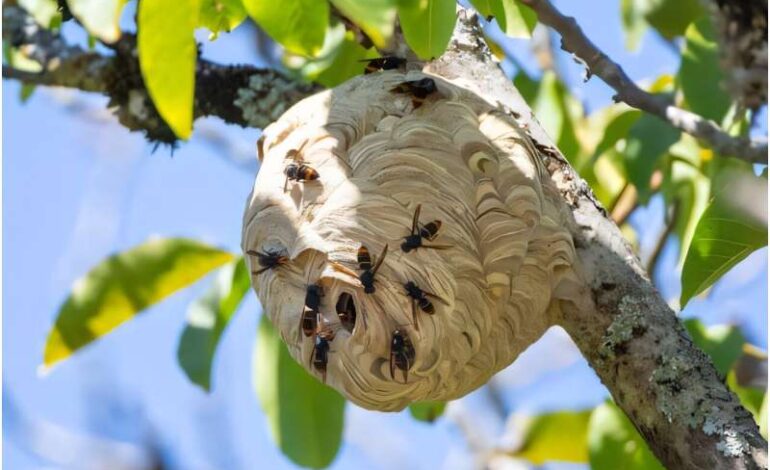Yellow-Legged Hornet Detected in New Zealand: Urgent Action Needed

The discovery of yellow-legged hornet nests in Auckland has raised alarms among New Zealanders, as authorities confirm five detections to date. The presence of these aggressive predators poses significant threats to public health, biodiversity, and particularly to honey bees, which are crucial for pollination.
The yellow-legged hornet, scientifically known as Vespa velutina, was accidentally introduced into France in 2004 and has since spread rapidly across Europe, establishing itself in countries such as Spain, Portugal, and Germany. Its ability to thrive in various environments raises concerns that it could similarly flourish in New Zealand’s warm, temperate climate.
A disturbing characteristic of these hornets is their aggressive nature. They defend their nests fiercely, with potential attacks occurring even from hundreds of meters away. In Europe, these hornets have become one of the leading causes of anaphylaxis, a severe allergic reaction, resulting from multiple stings. Victims have reported severe injuries, including eye damage from hornet venom.
In addition to health risks, the yellow-legged hornet significantly impacts honey bee populations. Research indicates that up to 40% of their diet consists of honey bees, which are essential for pollination. Beekeepers in Europe have reported hive losses of up to 80% in areas heavily infested with these hornets. The potential for similar devastation in New Zealand is alarming, given the absence of evolved defenses among native insects against such invasions.
Immediate Eradication Efforts Are Critical
New Zealand’s unique biodiversity makes it particularly vulnerable to invasive species like the yellow-legged hornet. Unlike Europe, New Zealand’s native insects have not co-evolved with social hornets or wasps, resulting in a lack of natural defenses. The country already grapples with high wasp nest densities, holding the world record for the largest individual wasp nest at 3.7 meters long.
If the yellow-legged hornet establishes itself in New Zealand, it could lead to widespread ecological damage. Urgent action is required to prevent this from happening. Historical precedents show that invasive hornets can be eradicated, as demonstrated by successful programs in the United States to eliminate the giant Asian hornet (Vespa mandarinia) and in the Chatham Islands, where German wasps were eradicated.
The key to successful eradication is early intervention while populations remain small and localized. Engaging the public in citizen science initiatives can enhance early detection and eradication efforts. People are encouraged to report any suspected hornet sightings and to participate in trapping initiatives. Public trapping has proven effective in other countries, and specific traps designed for yellow-legged hornets are available.
The Ministry of Primary Industries in New Zealand is urged to adopt these trapping strategies, which can include homemade traps made from plastic bottles. Hornets are attracted to various foods in the spring, such as protein sources like fish or meat, and even beer.
The Importance of Public Vigilance
New Zealand’s tradition of public vigilance and commitment to protecting its unique biodiversity is vital in this fight against the yellow-legged hornet. Citizens can report any suspected sightings through the Ministry’s website or by calling the exotic pest and disease hotline at 0800 809 966.
The time to act is now. With the potential for ecological and agricultural devastation, every individual can contribute to safeguarding New Zealand’s environment. Early detection and eradication are crucial, as the longer the hornets are allowed to establish themselves, the greater the risk to the nation’s biodiversity and public health.






